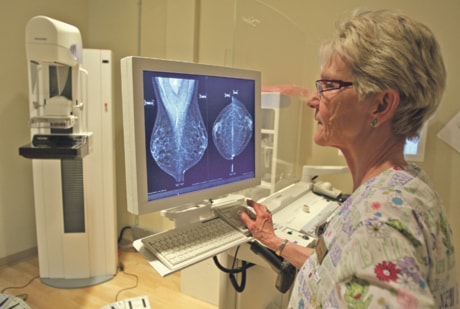For most women, Central Alberta Medical Imaging Services has put an end to the uncomfortable wait that follows a mammogram.
Film X-rays require women to wait and worry, often in a change room wearing a flimsy paper gown, after a mammogram in case the X-rays needed to be retaken, usually due to an unclear image.
But since last November, digital mammography at CAMIS has allowed X-ray technologists to see the image while the patient is still in the mammography room.
“For a typical screening patient, we will do them and they will go,” said Tricia Adams, the mammography, bone densitometry and nuclear medicine supervisor at CAMIS.
“We see the picture as we take them so if there is anything in addition that we need, we can typically do it right then,” Adams said.
CAMIS mammography has gone totally digital since three units were installed last fall.
Adams said she knows that going for a mammogram can make women think the worst.
“Unlike other kinds of X-rays, with mammography we’re looking for breast cancer. Period. That is why you’re there.”
Digital imaging allows technologists to make the image darker or lighter, change contrast and magnify the picture. That means less pictures need to be taken and less radiation exposure.
Digital is also better at detecting early breast cancer in women under 50, who usually have denser breast tissue.
“That’s one of the huge benefits of digital,” Adams said.
But there’s even more good news — digital causes less discomfort because less compression of the breast is required, although there will always be some women who will argue it hurts just the same, she said.
“It doesn’t need to be completely 100 per cent across the board the same thickness of the breast so we’re finding we’re not having to compress it as tight.
“Because mammography is uncomfortable and how we do it hasn’t changed in so long, anything we can do to make it better is a significant improvement.”
CAMIS serves about 1,800 to 2,000 women each month in the former David Thompson Health Region.
Digital has allowed the laboratory to see 15 to 20 more patients daily because of fewer retakes and quicker mammography sessions since technologists don’t have to change film cassettes for each picture, Adams said.
Digital also makes it easier to send and preserve images. “A lot of places in Alberta are in the midst of going to digital.”
szielinski@www.reddeeradvocate.com
